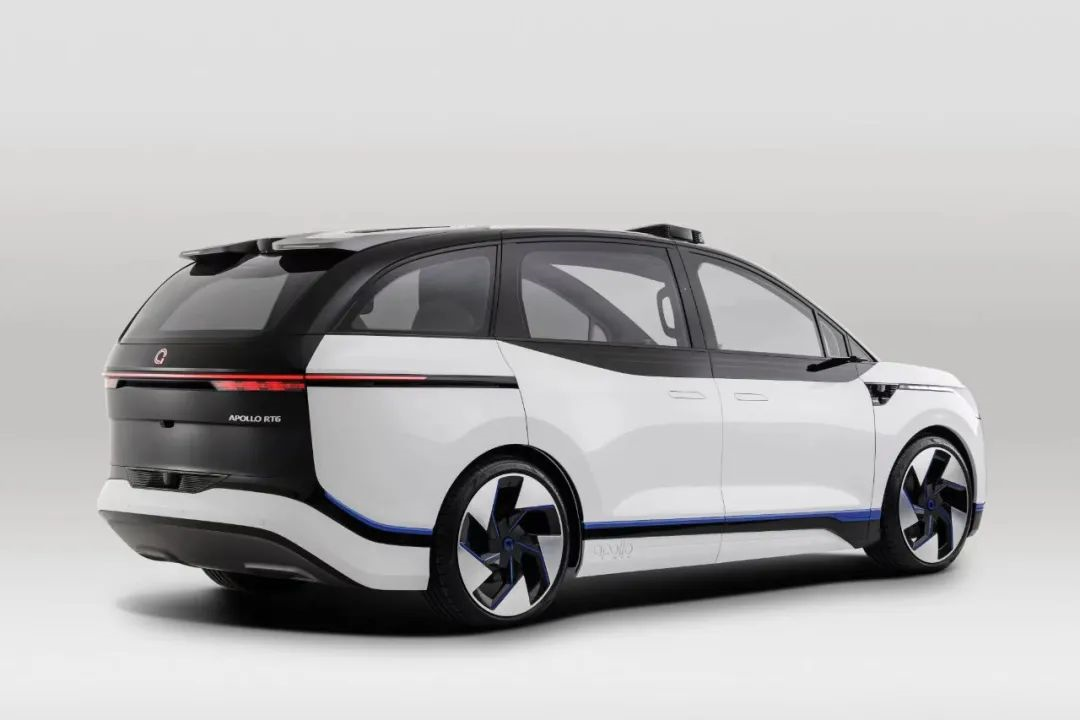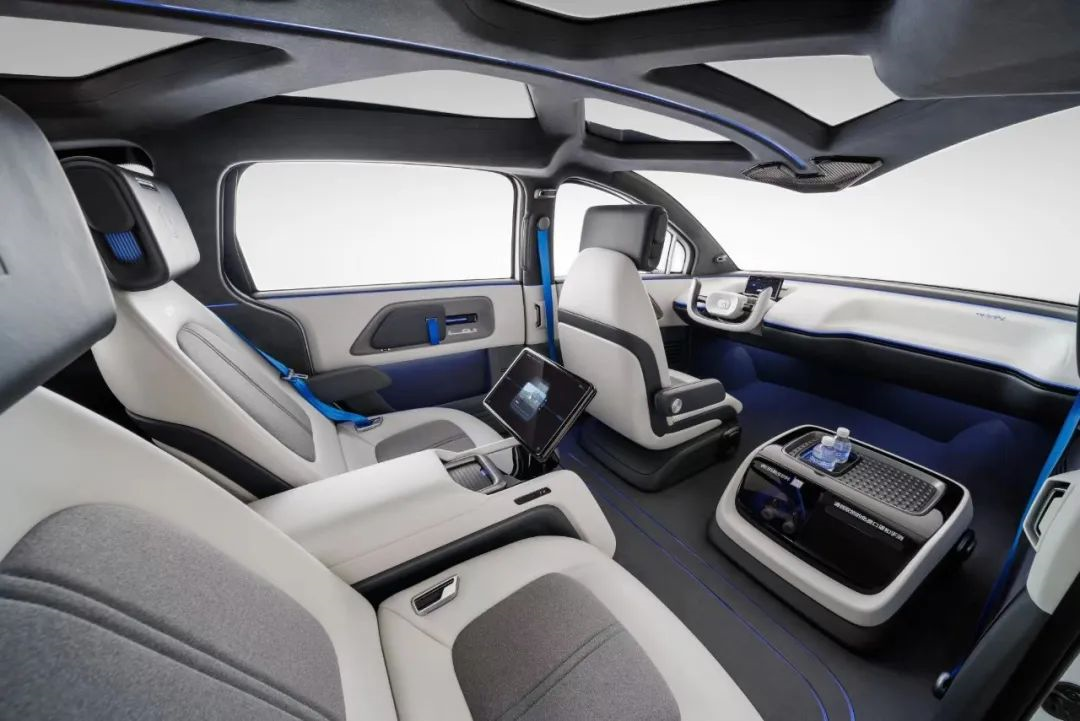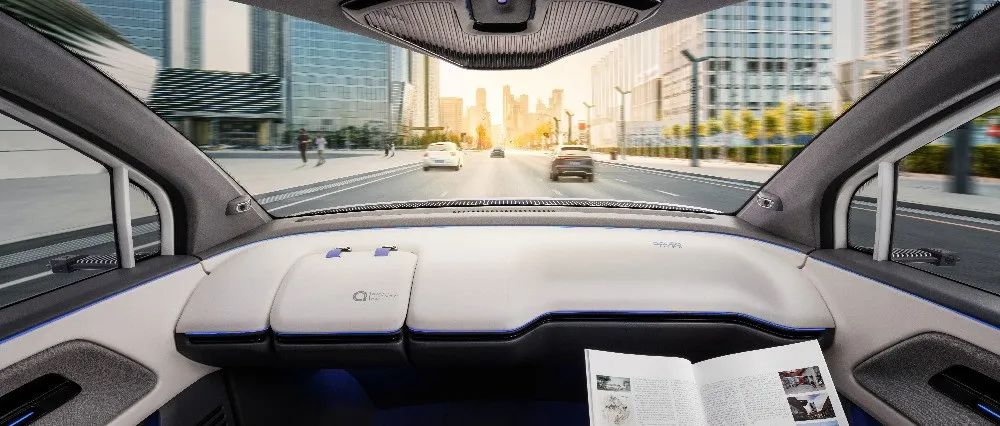This Year’s Theme for Self-Driving Cars: “Ditch the Steering Wheel”
Contributed by Wu Xianzhi
Edited by Wang Pan
This year’s self-driving cars are definitely all about “ditching the steering wheel.”
First, regulations on self-driving cars were implemented in China and the US. In April, Elon Musk disclosed two features for Tesla’s new model next year: no steering wheel and no brake pedal. Before the year is over, and with Lee Yeonbok competing against Musk, Baidu launched a car without a steering wheel.
Recently, Baidu World Conference unveiled the sixth generation of Baidu’s self-driving car, Apollo RT6. Reportedly, Apollo RT6 only costs one-tenth of the industry’s cost. When deployed in large quantities, the cost of ride-sharing could decrease by half.
Baidu’s founder, chairman, and CEO Li Yanhong said at the conference: “Baidu has reduced the cost of self-driving cars to one tenth of the industry’s cost, which is equivalent to the price of a regular new energy vehicle. The significant drop in the cost of self-driving cars enables us to deploy tens of thousands of such cars nationwide.”
The reduction in costs demonstrates that Baidu’s Apollo has found one key to unlock the “Robotaxi box,” making it possible to deploy on a large scale. From a macro perspective, Baidu’s release of a car without a steering wheel and human autonomy before Tesla marks a unique history for China’s self-driving technology, which has shifted from a follower to a leader in the global self-driving race.
Breaking Free from the Cost Trap
On July 21, the sixth generation of Baidu’s self-driving car, Apollo RT6, debuted. From the exterior to the interior, and from safety to autonomous driving performance, it has evident advantages in comparison to its predecessors and competitors.
The most intuitive aspect is its minimalist design for both exterior and interior. The galaxy waistline runs through the car’s body, with a dragon bone skylight design that seamlessly integrates the skylight structure with the roof sensor kit. The Lingxi headlight provides interactivity, offering a recognizable and suggestive lighting design. The automated sliding door makes entry and exit more effortless.

Apollo RT6 is a new cross-breed of SUV+MVP, with SUV dynamics advantages and more internal space after the removal of the steering wheel.
In terms of specifications, the 2830mm wheelbase is equivalent to an A-class car, with 1050mm of foot space as much as a B-class car. The overall interior design is matched with dynamic lines and light strips, creating an illusion of space comparable to a C-class car. Even a six-foot-five person would not feel cramped after getting inside.
The Apollo RT6 cockpit is spacious and highly customizable, which marks the most prominent feature. Not only can it be switched between manned and unmanned modes, but also modular front-row configurations are available for choosing from a variety of seats, vending machines, desks, game consoles, luggage racks, etc., making it possible for Apollo RT6 to provide multiple scenario morphologies and in-car ecosystems.

Safety has always been the core of transportation technology iteration, and Baidu is no exception.
The Apollo RT6 should be the generation with the most significant safety enhancement among the previous products. It is reported that the new vehicle adopts an industry-first seven-fold fully redundant vehicle system, including power redundancy, communication redundancy, L4-level redundant braking system, L4-level redundant steering system, structure redundancy, computing unit redundancy, and sensor redundancy.
In simple terms, “redundancy” refers to the need to configure some critical functions or components repeatedly, based on system safety and reliability considerations, which is equivalent to adding several backups to prevent risks when the system fails. The more redundancy, the lower the probability of safety risks and the more comprehensive emergency response.
In terms of vehicle systems, Apollo OS obtained the first automatic driving car functional safety ASIL D certification in the industry – this certification is the highest safety level for automatic driving systems in the industry.
In addition to the system, the body adopts a super-high-strength cage vehicle design, which reinforces safety for the rear seats and achieves a five-star safety collision rating. Furthermore, the fault diagnosis and risk reduction system for the vehicle+automatic driving system integration also make Apollo RT6 significantly enhanced in safety.
One of the main reasons for the frequent problems with Tesla’s automatic driving is the failure to coordinate the issues between software and hardware.
Baidu’s sixth generation unmanned vehicle is a product of deep fusion of AI technology and vehicle engineering. The development of unmanned vehicles will inevitably evolve from the past modification of finished cars to the direction of developing customized platforms for vehicle models. The trend towards integration of software and hardware means adding double insurance for safety and reliability.
It is worth mentioning that RT6 is equipped with the latest generation of Apollo’s automatic driving system, with stronger L4-level automatic driving ability than the previous generation, which can support larger scale and higher safety fully unmanned driving under more complicated urban road conditions in China.
In terms of computing power, the vehicle-grade high-performance main redundancy dual computing unit has a computing power of up to 1200Tops, which can handle various complicated working conditions. The entire vehicle is equipped with 38 external sensors, including eight laser radars, six millimeter wave radars, 12 ultrasonic radars, and 12 cameras. The highly integrated multi-sensors give this generation of products stronger sensing capabilities and accuracy than before.Overall, Apollo RT6 is a “two highs and one low” product, that is: high safety, high quality, and low cost. Especially with the low cost of RT6, it will accelerate the transformation of the transportation industry.
RoboTaxi “Shift and Accelerate”
The sixth generation of autonomous vehicles has not increased costs with all-around iterations, but rather decreased to 250,000 yuan. In fact, over the past three years, while Baidu has launched three mature solutions, the cost has continued to decline.
In 2019, the cost of Baidu’s fourth-generation autonomous vehicle was as high as 960,000 yuan. In 2021, the cost of the fifth generation was 480,000 yuan, and now the cost of the sixth generation is 250,000 yuan, making the cost of autonomous vehicles more accessible.
It should be pointed out that Apollo RT6 has provided a path for scaling down costs from modified cars to platform customization. RT6 is the first vehicle model for Baidu’s Apollo platform. In addition to traditional automotive engineering-related parts that are relatively mature, the platform also adds unmanned driving-related components and system adaptations.
Currently, most Robotaxi companies are still entering the market by modifying cars. On the one hand, the cost of the original car has been basically determined, but many luxury configurations that generate costs are not necessary for rear-seat passengers, such as intelligent car machines and large screens designed for the driver in the front row.
On the other hand, the difficulty of investing in modified cars on a large scale makes it almost impossible to reduce the cost of a single vehicle, and the prospect of profitability is also dim. As mentioned earlier, Apollo RT6 has redesigned the vehicle based on user needs, so that users can not only enjoy the benefits of scaling down costs, but also increase other value-added components and services while improving user experience.
Multiple standard jacks inside the vehicle, as well as a detachable steering wheel and spacious space, demonstrate that the cabin has a high degree of customization. For example, the large screen designed for private cars can be turned into an advertising space, the sink can be turned into a paid beverage dispenser, and even future paid entertainment can be provided to passengers to change the boredom of the journey. All of these will give Robotaxi more commercial value than traditional ride-hailing cars.
From a broader perspective, the cost reduction reduces the difficulty of large-scale deployment. It is understood that Apollo RT6 will be put into use on “RoboTaxi” next year.
It is well known that traditional ride-hailing cars face three major costs: drivers, vehicles, and operations. Even though many platforms are beginning to implement rental car modes to share costs with drivers, major platforms such as Didi, T4, Cao Cao, and Xiangdao still bear huge cost pressures.
The commercial model for autonomous vehicles must have a lower cost than ride-hailing cars. Apollo RT6’s continuous cost reduction indicates that Robotaxi can maintain operations through cost-cutting measures and even achieve profitability.## The Cost Benefits of Self-Driving Cars
Autonomous cars have long been discussed as a solution to the high cost of employing human drivers. According to Baidu, in a calculation based on five years of operating expenses and a first-tier city in China, excluding vehicle costs, ride-hailing drivers spend approximately 8,000 yuan per month. In contrast, Apollo RT6’s biggest advantage is that it doesn’t require a driver. With a price tag of 250,000 yuan per vehicle, its monthly cost is only about 4,100 yuan.
From a business model perspective, Robotaxi and traditional ride-hailing services are both examples of economies of scale. As the operating cost for self-driving vehicles decreases, so will the cost of transportation for users. This “cost gap” will accelerate the demise of traditional ride-hailing services.
Ignoring other factors, in theory, once an autonomous vehicle’s cost is lower than that of a traditional ride-hailing service, there will be no cost issue in deploying them on a large scale. As market demand increases, it will stimulate related production enterprises in a reverse way. As production capacity is released and efficiency improves, costs will continue to decrease, leading to mutually reinforcing conditions over a long period of time.
In addition to its commercial value, Robotaxi will significantly reduce traffic accidents caused by human error, and the operator will avoid the platform cost of conflicts between drivers and passengers during the traditional ride-hailing era. With 24/7 operation and compatibility with intelligent transportation systems, it will reduce the overall transportation cost for society.
Baidu’s founder and CEO, Robin Li, mentioned a data point at a conference: intelligent transportation based on vehicle-to-everything communication can improve traffic efficiency by 15-30%, promoting an absolute growth of GDP of 2.4%-4.8% per year.
Global Autonomous Vehicle Racing
This year, Chinese companies like Baidu have gradually overtaken overseas giants in the global autonomous vehicle racing.
Cruise, which is owned by General Motors, underwent layoffs earlier this year. According to foreign media reports, it began laying off 8% of its workforce in mid-May due to the pandemic. Recently, the Wall Street Journal released an anonymous letter revealing that there may be significant deficiencies in Cruise’s autonomous driving technology. Cruise’s autonomous taxi fleet frequently stops at intersections, resulting in traffic congestion.
Tesla, once considered a benchmark in autonomous driving, has also encountered setbacks. Its Autopilot driving system has recently been found to have technical defects, and a Munich court in Germany has ordered the company to pay €112,000 to a customer. In addition, on July 14th, Andrej Karpathy, Tesla’s director of AI and self-driving technology, resigned, and the downsizing of its California self-driving team decreased its competitiveness.
Waymo, a subsidiary of Google, released its fifth-generation autonomous driving system in March, but its operational area is limited to California and Arizona. Waymo’s peak orders for the first quarter were 52,000, only 25% of Baidu’s peak orders.
On the other side of the ocean, the release of Apollo RT6 is a landmark event.After breaking free from the cost “cage”, domestic Robotaxi will enter the accelerated deployment phase. According to the plan, in the second half of 2023, Apollo RT6 will be put into trial operation in small batches by RoboSense, and the planned annual production capacity will gradually increase from tens of thousands to hundreds of thousands of units based on the operation deployment rhythm. It is expected to be operational in 65 cities by 2025 and to cover 100 cities by 2030. Chinese autonomous driving companies, led by Baidu, will continue to surpass US technology giants in areas such as technology, products, and operators.
This article is a translation by ChatGPT of a Chinese report from 42HOW. If you have any questions about it, please email bd@42how.com.
